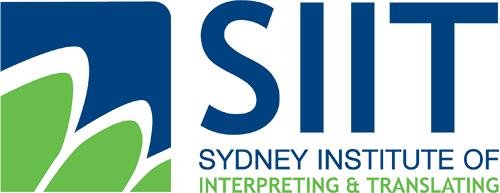Will AI replace human translators?
Artificial intelligence (AI) is a broad term encompassing a wide range of software solutions aimed at serving a specific set of purposes. With the growth of artificial technology, many have questioned whether artificial intelligence (AI) will eventually replace humans in the workplace as industries become increasingly automated and digitalised. This is particularly the case when it comes to the translation and interpreting industries. With the improvement of artificial Intelligence and machine translation technology, these services have become increasingly popular over the years and have left many questioning if human translation is really better than machine translation or if it is now a dying industry.

Advantages of AI Translation
Both translation and interpreting services involving human translators and interpreters are complex processes that require time, skill, training and effort to be delivered as swiftly and accurately as possible. AI technology in the modern world, albeit less accurate and reliable, has many advantages, such as:
● It is able to offer more efficient solutions that are both fast and low in cost.
● No need to rely on human translators or work around their schedules and requirements.
● There are many free machine translation tools available online such as Google Translate, Microsoft Translator, DeepL, and other tools based on artificial intelligence, making it much more convenient than traditional translating/interpreting.
● Machine translation software and AI solutions are constantly developing, adaptable, programmable, and increasingly accurate.
● AI software can be used to translate between multiple languages whereas most translators specialise in only two or three languages.
Disadvantages of AI Translation
However, the disadvantages of AI translation include the following:
● Machine translation and artificial intelligence software are unable to understand humour, sarcasm, human emotions, and other cultural or linguistic complexities and nuances.
● AI and machine translation can often result in inaccurate or awkward translations due to failure to recognise specific words, phrases, slang, and other nuances, meaning the translated content can be awkward, unnatural or even offensive. If human translators are replaced fully by machine translation software, the result can be damaging, especially for companies and brands.
● Differences between interpreting and translation services. Although AI technology can handle translating static texts in a fraction of the time it would take a human translator to render, doing the work of interpreters would be difficult. As interpreters are often required to translate simultaneously, designing an effective technology for simultaneous interpreting is something that has still yet to be done effectively.
So… will AI replace human translators/interpreters?
Despite the increasing concerns over AI’s eventual replacement of jobs in this sector, it will likely never be able to fully replace human translators because of the complexities and nuances that come with capturing each language in its entirety. Every language has different semantics, cultural influence, syntax, and grammar rules that are difficult to programme comprehensively into automated technologies.
Instead, it is likely that the art of translation and interpreting will not go away, but will rather evolve to assist human translators rather than fully replace them. This is because of the ever-evolving nature of language and culture with emerging terms, grammar and ideas that previously did not exist, and exceedingly difficult and complicated languages and cultures alike presenting difficult and unprecedented challenges for AI. Different contexts and cultural terms and phrases can sometimes render other linguistic translations or variations strange or downright meaningless. Additionally, machines, although fantastic at following set rules in its translations, will likely never be able to capture the essence and versatility of language that humans are able to. This is because languages are complex and nuanced, and there are factors like context, humour, or emotions that need to be considered in order to produce an effective and accurate translation. Development and advancement of computer-assisted translation tools such as machine translating software, translation memory systems, smart tools for audio and video content and more are continuing in order to assist with translation and interpreting jobs and services alike.








